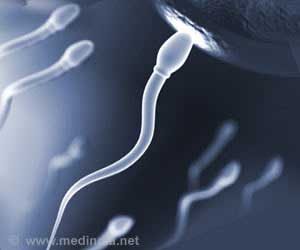Men who fall for women half their age are actually doing humans a service, as it ensures the human species survives, a new study states.
Men who fall for women half their age are actually doing humans a service, as it ensures the human species survives, a new study states.
The study was carried out by researchers at Stanford and the University of California-Santa Barbara who say that older men who produce progeny are contributing to human longevity.The researchers state that if evolution theory is taken into account then individuals should die of old age when their reproductive lives are complete, generally by age 55 in humans.
However, fatherhood of a small number of older men is enough to postpone the date with death because natural selection fights life-shortening mutations until the species is finished reproducing.
Cedric Puleston, a doctoral candidate in biological sciences at Stanford, said that men turning fathers when they are older has an effect on the population as a whole.
"Rod Stewart and David Letterman having babies in their 50s and 60s provide no benefit for their personal survival, but the pattern [of reproducing at a later age] has an effect on the population as a whole," Puleston said.
"It's advantageous to the species if these people stick around. By increasing the survival of men you have a spillover effect on women because men pass their genes to children of both sexes," he added.
Advertisement
This hypothesis is based on the work of British evolutionary biologist William Hamilton who in 1966, worked out the mathematics describing the "wall of death" i.e. surviving beyond the reproductive years.
Advertisement
"People don't like to do two-sex models because [it's difficult] to look at how [men and women] pair up. But men's fertility is contingent on women's fertility—you have to figure out how they match up. We care about reproduction because that is a currency by which force of selection is counted. If we have not accounted for the entire pattern of reproduction, we may be missing something that's important to evolution," he said.
In the paper, the researchers analyzed "a general two-sex model to show that selection favors survival for as long as men reproduce." The scientists presented a "range of data showing that males much older than 50 years have substantial realized fertility through matings with younger females, a pattern that was likely typical among early humans." As a result, older male fertility helps to select against damaging cell mutations in humans who have passed the age of female menopause, consequently eliminating the "wall of death."
"Our analysis shows that old-age male fertility allows evolution to breach Hamilton's wall of death and predicts a gradual rise in mortality after the age of female menopause without relying on 'grandmother' effects or economic optimality," the researchers say in the paper.
The scientists compiled longevity and fertility data from two hunter-gatherer groups, the Dobe !Kung of the Kalahari and the Ache of Paraguay, one of the most isolated populations in the world. They also looked at the forager-farmer Yanomamo of Brazil and Venezuela, and the Tsimane, an indigenous group in Bolivia as "they're living a lifestyle that our ancestors lived and their fertility patterns are probably most consistent with our ancestors."
In the less developed, traditional societies, males were as much as 5-to-15 years older than their female partners. "We argue that realized male fertility was substantial at ages well past female menopause for much of human history and the result is reflected in the mortality patterns of modern populations," the authors say.
"We conclude that deleterious mutations acting after the age of female menopause are selected against … solely as a result of the matings between older males and younger females. "The key question is: Does the population have a greater growth rate if men are reproducing at a later age? The answer is 'yes.'
The age of last reproduction gets pushed into the 60s and 70s if you add men to the analysis. Hamilton's approach was right, but in a species where males and females have different reproductive patterns, you need a two-sex model. You can't correctly estimate the force of selection if you leave men out of the picture. As a man myself, it's gratifying to know that men do matter."
Supported by grants from the U.S. National Institute on Aging, the study "Why Men Matter: Mating Patterns Drive Evolution of Human Lifespan," was published Aug. 29 in the online journal Public Library of Science ONE.
Co-authors on the study were Shripad Tuljapurkar, the Morrison Professor of Population Studies at Stanford; Puleston; and Michael Gurven, an assistant professor of anthropology at UCS.
Source-ANI
LIN/J






